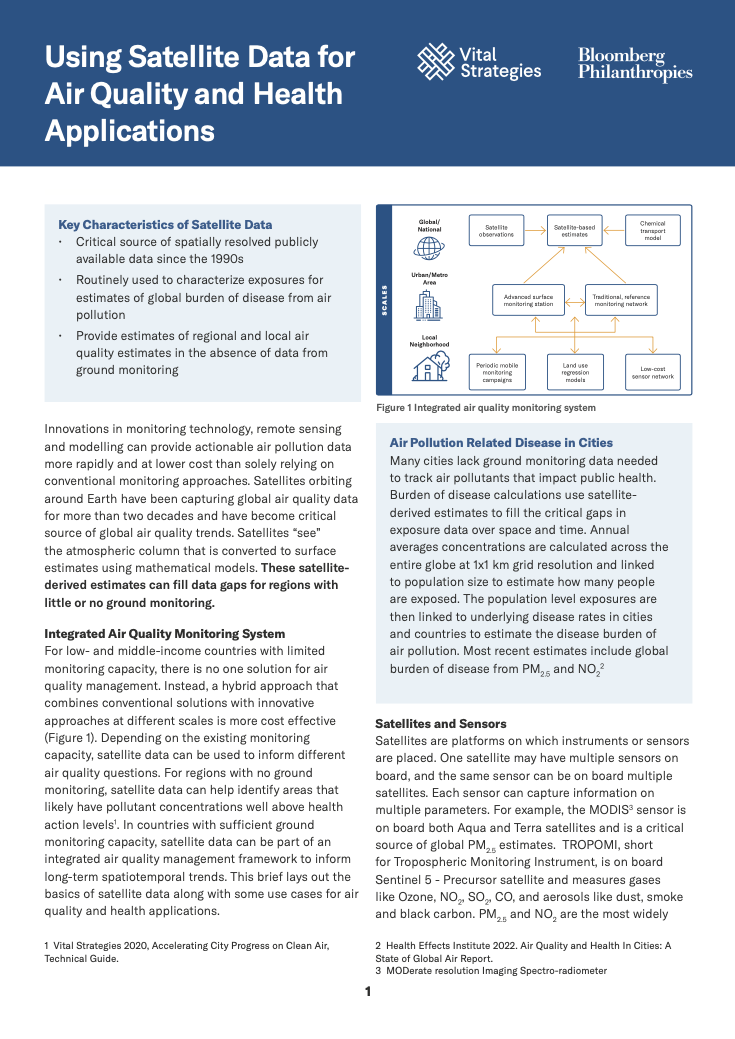More than 90% of the world breathes polluted air. Yet, many cities lack ground monitoring data needed to track air pollutants that impact public health.
For countries with limited monitoring capacity, there is no one solution for air quality management. Instead, a hybrid approach that combines conventional solutions with innovative approaches at different scales is more cost effective. One approach includes the use of satellites and sensors. Satellites orbiting around Earth have been capturing global air quality data for more than two decades and have become critical source of global air quality trends. Satellites “see” the atmospheric column that is converted to surface estimates using mathematical models. These satellite derived estimates can fill data gaps and provide estimates of regional and local air quality in the absence of data from ground monitoring
This brief provides an overview on using satellite data for air quality and health applications, resources and trainings for cities to start integrating satellite data into their air quality management plans and national and access to regional datasets.
Recent Abstracts
Effects of Heat on Early Childhood Development
Blood Lead Surveillance of Children and Pregnant Women in Tamil Nadu, India
Sportswashing through Media: Coca-Cola’s Olympic Play – A Research Report
What’s in Our Food?
Mais Dados Mais Saúde
More Data, Better Health – Primary Health Care
Mais Dados Mais Saúde: Experiência De Discriminação Cotidiana Pela População Brasileira
More Data, Better Health – Experience of everyday Discrimination by the Brazilian population
Monitoramento de Estratégias pelo Fim da Violência contra Crianças e Adolescentes
Harm Reduction: The Neglected Pillar of US Drug Policy
